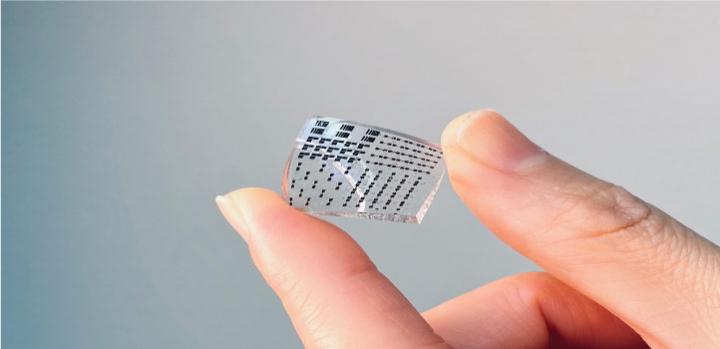
Described in Science Advances, the biomimetic e-skin was created at Saudi Arabia’s King Abdullah University of Science and Technology (KAUST). It features a soft hydrogel substrate reinforced with silica nanoparticles on top of a 2D titanium carbide MXene sensing layer.
Highly conductive nanowires bind the two layers, enabling the e-skin to sense objects from 20cm away and respond to stimuli in under one-tenth of a second. According to the KAUST team, the prototype could one day be used on advanced prosthetics and soft robotics.
Glasgow solar skin delivers ultimate light touch
"The ideal e-skin will mimic the many natural functions of human skin, such as sensing temperature and touch, accurately and in real time," said KAUST postdoc Yichen Cai.
"The landscape of skin electronics keeps shifting at a spectacular pace. The emergence of 2D sensors has accelerated efforts to integrate these atomically thin, mechanically strong materials into functional, durable artificial skins."
The hydrogel layer of the KAUST e-skin is more than 70 per cent water, making it highly compatible with human skin. During the development process, the hydrogel was pre-stretched in all directions, then a layer of nanowires was applied before the team slowly released the hydrogel layer back to its initial shape. This meant conductive pathways to the sensor layer were created that remained intact even when the material was stretched to 28 times its original size. It continued to perform well after 5,000 deformations, recovering in about a quarter of a second each time.
"It is a striking achievement for an e-skin to maintain toughness after repeated use which mimics the elasticity and rapid recovery of human skin,” said co-author Jie Shen.
The team said the technology could be used to monitor a range of biological information, such as changes in blood pressure that can be detected from vibrations in the arteries to movements of large limbs and joints. This data can then be shared and stored on the cloud via Wi-Fi. But its use may not be restricted to the human body, according to Cai.
"We envisage a future for this technology beyond biology,” he said. “Stretchable sensor tape could one day monitor the structural health of inanimate objects, such as furniture and aircraft."




Glasgow trial explores AR cues for autonomous road safety
They've ploughed into a few vulnerable road users in the past. Making that less likely will make it spectacularly easy to stop the traffic for...